Leica Summicron-M 90mm f2 Pre-ASPH Lens Review
Ah, a Leica lens. A creature desired by many. Also a creature not understood by all. Definitely not a cheap adventure but how can it not deliver the thrill! People who have Leica lenses tend to stick by and adore them. No other lenses measure up to The Leica standard. Then there are those that don't get why one would spend so much for a lens. They might not dislike the results but they can't see the difference between a Leica lens and a cheaper alternative. Then there are collectors. Which camp do I fall into? An answer is encoded in this writing. Read it all to decode its secrets.
Lens History
I don't know about the history of this lens and I'm too scared to research anything about it. I worry that if I write about it and make a mistake, some Leica professionals will turn up and rip me a new one. Or give all my lenses fungus.
I can tell you that it's a 90mm lens with an f2 aperture. It attaches to the camera body using M-Mount. It's not the newer aspherical ( hence the pre-ASPH ) version. Aspherical APO design would deliver sharper and more corrected results. It also delivers a much heavier price tag. It's also not the older Summicron ( no -M ) 90mm f2.
My History With The Lens
If I can't write about the generic history of this lens, then I can write about MY history with this lens. Even if I make a mistake it will be very difficult to prove that it is, in fact, a mistake. Checkmate historians!
This lens is the first M-Mount lens that I bought but it's not the first Leica lens that I had. That was a Leitz 90mm f4 LTM lens. I must have a thing for 90mm Leica lenses.
I bought it at the same time when I bought an M3. I thought that having a Leica lens on a Leica body would give me the best chance of euphoria. I didn't look for this specific lens. I also didn't look only at 90mm lenses. I was looking for a Leica M-Mount lens without any extra specifics. This 90mm Summicron appeared with the right price and I pounced. I don't mind short telephoto lenses although I prefer a 50mm lens in normal circumstances. Luckily 90mm works well with an M3 as it has the largest magnification viewfinder.
I have the black version which is made in Canada. It's in mint quality and feels like new. It came in a soft pouch and with its own gravity field that sucks resources from your bank account. Even with the good price that I paid, it's the most expensive lens that I currently own.
At the time my only M-Mount camera was an M3 so that's where I used it. Later I bought an adapter that allowed me to mount it on a Sony A7S ( which I still had at the time ) but I only took a few photos with that combo. Later still I got an M9 so I obviously used it there as well. Today nothing has changed and I use it on both M3 and M9 ( although it's a different M9 ).
I've had this lens for almost two years now and in that time it has projected many images both on film and digital. I have a good understanding of what this lens does to me.
The Lens
Time to get into the specifics of what I think about Leica Summicron-M 90mm f2 pre-ASPH lens. Strap in ( or on ) as it's going to be a bumpy ride ( which works for the "strap on" as well ).
Build Quality & Ergonomics
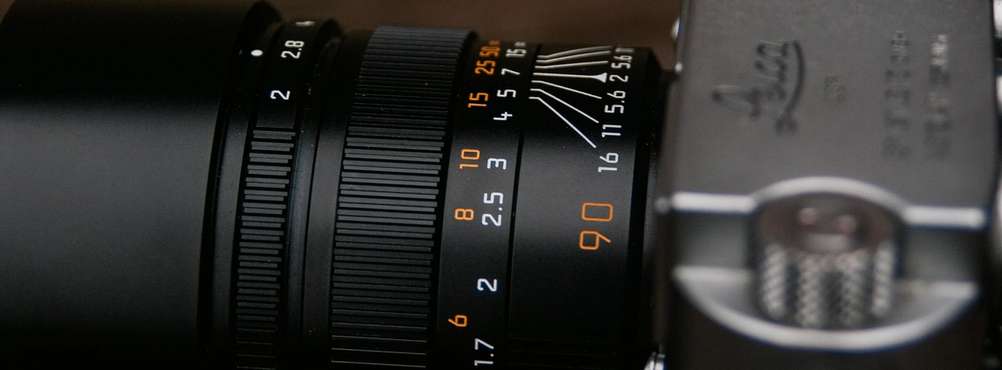
The lens looks beautiful and the typography fits together well with the overall design.
Some people look down on Leica lenses made in Canada but they are, at least slightly, insane. The build quality is amazing and the lens feels like the most solid lens that ever was. It feels like one unit instead of it being put together from many parts. There is no unwanted movement. Everything fits together with perfection and doesn't have the slightest rattle. The parts that are supposed to move do that with precision and consistency.
The solid nature of the lens comes with a cost of weight ( together with the financial cost ). I, myself, like a heavy lens but it could be too heavy for some. I've read that the chrome version, which is made from brass, is even heavier. Benefit there would be that you don't need a gym membership to do weightlifting as you have the heaviest weight already attached to your camera. Even with the weight it balances well on a camera. It's more front heavy than not but it feels good. This is thanks to the fact that Leica cameras are also not the lightest of things.

To avoid having the camera fall nose first, they designed the lens so that it can't fall on the flat surface. Probably not a true story.
In any case the lens feels good on Leica M cameras.
With this lens you don't need a hood as it's already integrated within the lens itself. It doesn't look like a hood when it's not used, which is fantastic as it means that the lens has a very clean design. It has the perfect amount of resistance when you slide the hood out. It means that it will never slide out or collapse by accident. At the same time it's easy to erect and...de-rect...by hand when that is your intention.
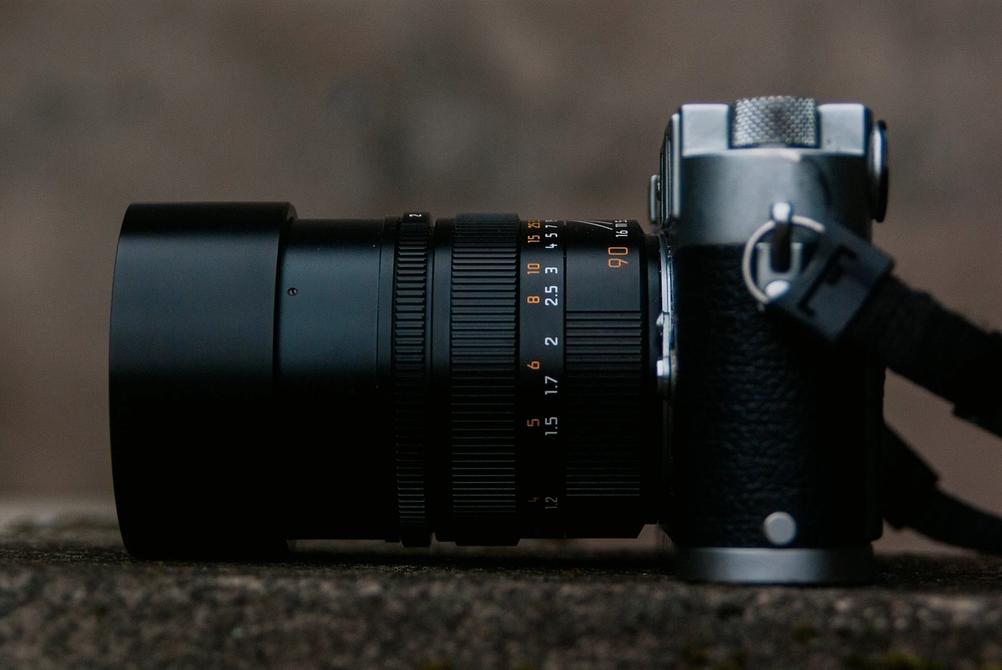
With the hood erected the overall length is increased but not to the levels where it impacts handling.

The hood provides good protection against unwanted high intensity light sources.
Viewfinder blockage does exist on both M3 and M9 but it doesn't give real world problems when using the lens. When not using the hood it doesn't even register in my brain that there is a blockage. With the hood extended you can see it but it's no big deal.
It's all sunshine and roses so far but I have my fair share of complaints as well. I said that "parts that are supposed to move, do that with precision and consistency". That's true. But not all parts have the right dampening. Let's start with the aperture ring. It feels precise. It clicks well. It is precise in use. But it's too loose. It feels good to use it as you can control it with a very light touch...but it doesn't work well in practise. You can hit it out of the desired aperture by accident way too easily. I've done it many times.
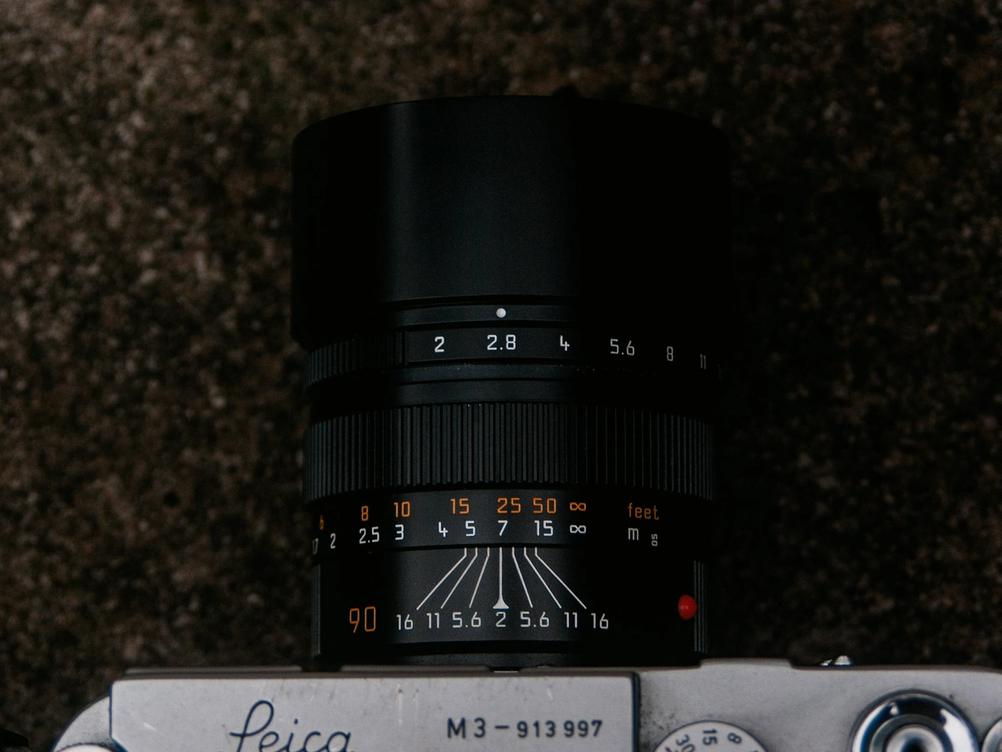
The ribbed for your pleasure rotating controls on the lens feel super solid but they have the wrong resistances. Aperture ring should take some stiffness from the focus ring and give some of that looseness to the focus ring.
Next is the focus ring. It has the opposite problem. It is smooth across the whole travel and the resistance is consistent. But it's too stiff. You will never hit it out of your setting by accident. Which is good but I would prefer a lighter resistance. You could say that a stiff focus ring makes sense on a lens that needs very precise focussing but it doesn't need to be this resistive. And I don't mean to say that it feels "broken". It feels deliberate in the way it feels, but it's not to my liking.
My last complaint is about the lens cap. Yep. With a lens costing this much one might expect a quality metal lens cap but we only get a plastic one. It's a pretty solid, plastic lens cap but it's still plastic and it feels like one. There is no finesse in using it. You use it like a lens cap that belongs to a lens that costs $100 not $1000. I have also knocked it off by accident. Exactly the same way it happens with lens caps sitting on way cheaper lenses.
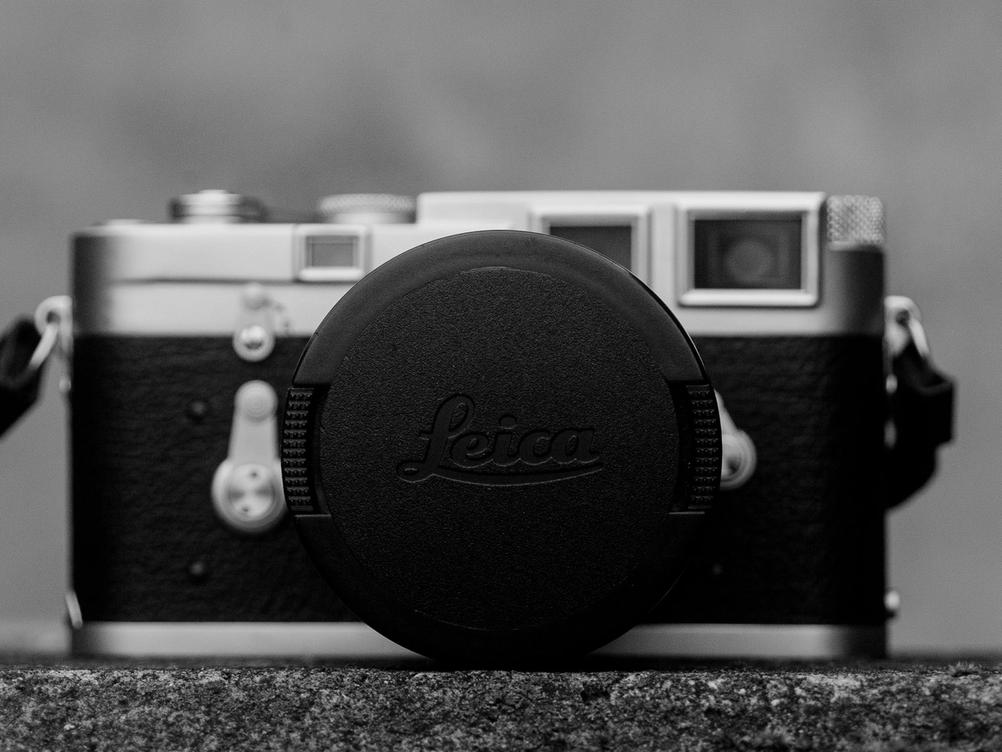
The Leica lens cap may look OK in the pictures but it's not much better than other plastic lens caps. It's a little sturdier but it could be so much more.
Image Quality
The lens delivers good results. Very good in fact. But the results are also boring and annoying.
Sharpness
The lens is sharp. It's plenty sharp wide open at f2 but it will improve as you close the aperture down. Past f5.6 or so you would have to get to quantum level to see the differences. Sharpness is also consistent across the whole frame. There are no smudges in the corners. I've also experienced no focus shift so you can be confident in focussing. As long as the lens rangefinder mechanism is in agreement with the camera rangefinder mechanism. Which it is on both my M3 and M9.
One thing to remember is that this is a short telephoto lens with a pretty wide aperture. Whilst f2 is sharp, there won't actually be too many things in focus when shooting at f2. The "in focus" field is narrow. This means that if you want everything to be in focus and sharp then you have to close the lens right down.
And another thing that can impact sharpness is the shutter speed. It's a 90mm lens so you shouldn't go slower than 1/100th of a second. You can but you have to be very still. Otherwise motion blur will eat away the sharp edges and leave you with unwanted movement in the photo.

- Camera
- Leica M9
- Lens
- Leica Summicron-M Pre-ASPH 90mm f2
There is no question whether this lens is a sharp performer. It is. It doesn't struggle with resolving.

- Camera
- Leica M9
- Lens
- Leica Summicron-M Pre-ASPH 90mm f2
Here's an example where lens sharpness doesn't mean that everything will be sharp. Aperture was too wide which means that the front trees are not in focus and so not sharp.

- Camera
- Leica M9
- Lens
- Leica Summicron-M Pre-ASPH 90mm f2
Sharpness is not one of the lenses weak points. At some points I wonder what benefits would the ASPH version offer.

- Camera
- Leica M9
- Lens
- Leica Summicron-M Pre-ASPH 90mm f2
Sharpness remains on closer distances as well.
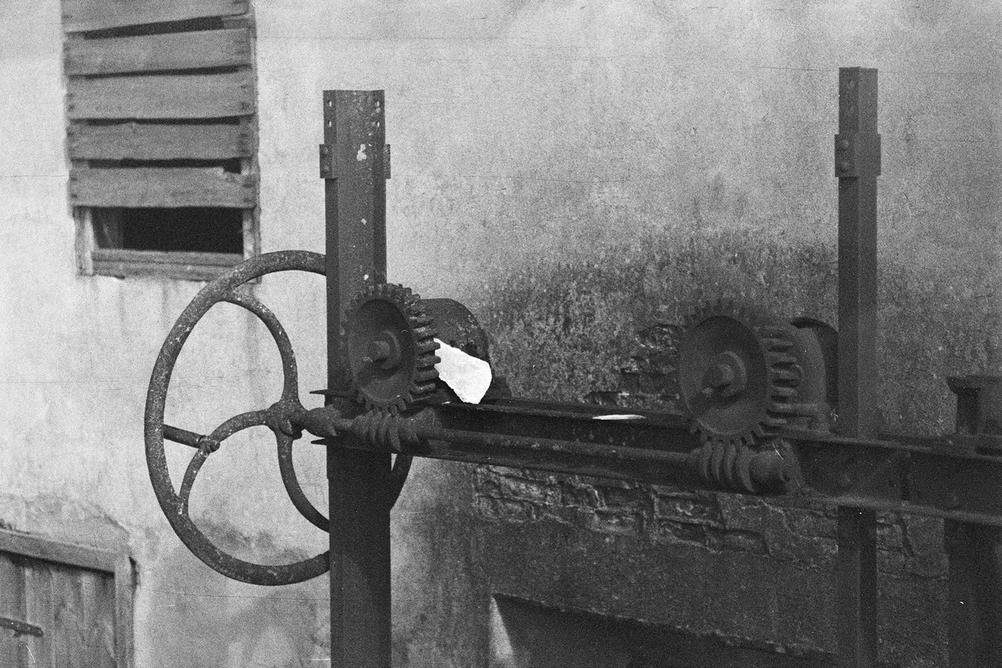
- Camera
- Leica M3
- Lens
- Leica Summicron-M Pre-ASPH 90mm f2
- Film
- Svema FN250 EI25
- Development
- Compard R09 / Rodinal; Dilution 1:100; 1hr semi-stand
- Scanner
- Reflecta ProScan 10T
There are no issues with sharpness on film as well. Even when using an ancient soviet film.
Colors & Contrast
The contrast is a "modern lens contrast" whilst not being too strong. It doesn't have a vintage lens or cinematic look. Colors are a similar game. They are natural and with a slight bump in saturation. Actual color balance leans towards the cooler side but it also has hints of green. It's not too noticeable and definitely easily fixed in post if that's not something you like.
There certainly isn't a Zeiss pop in the rendering. Contrast is tamed as are the colors. This is where my issues with the lens start. It's a boring look that is quite difficult to mold into something that I like. For the most part I like "classic" or "vintage" rendering. A bit lower contrast and a slight fade to the colors. At the same time I have some enjoyment from Zeiss rendering which is oftentimes very over the top. Saturated and contrasty. Summicron renders somewhere in the middle. In the land of the boring.
You can tweak these things in post processing and I must do that. It's very rare that I like the color rendition from this lens straight out of the camera. It's true for both digital and color film photography. One instance where I quite like the rendering is black and white film. The enhanced contrast works well without blowing things too much into blackness or whiteness.
I very rarely mention color aberrations and other optical lens problems. Most of the time they don't bother me or are fixable in post with little effort. For this lens I feel like I have to mention the purple fringing. It's very pronounced and noticeable. Purple fringing is when you have purple "aura" around dark subjects against a very bright background. Think tree branches against a bright sky. I notice purple fringing on this lens more than any other lens that I use. It's not difficult to fix in post as most applications will have automated tools to deal with it but sometimes it's not as easy to do. Some photos have such significant fringing that removing it also impacts the whole picture. It's an issue that happens very rarely but it does happen. It shouldn't happen at all for a lens costing this much.

- Camera
- Leica M9
- Lens
- Leica Summicron-M Pre-ASPH 90mm f2
When colors in real world get saturated I struggle the most with the output of this lens. Don't know why. Just happens.
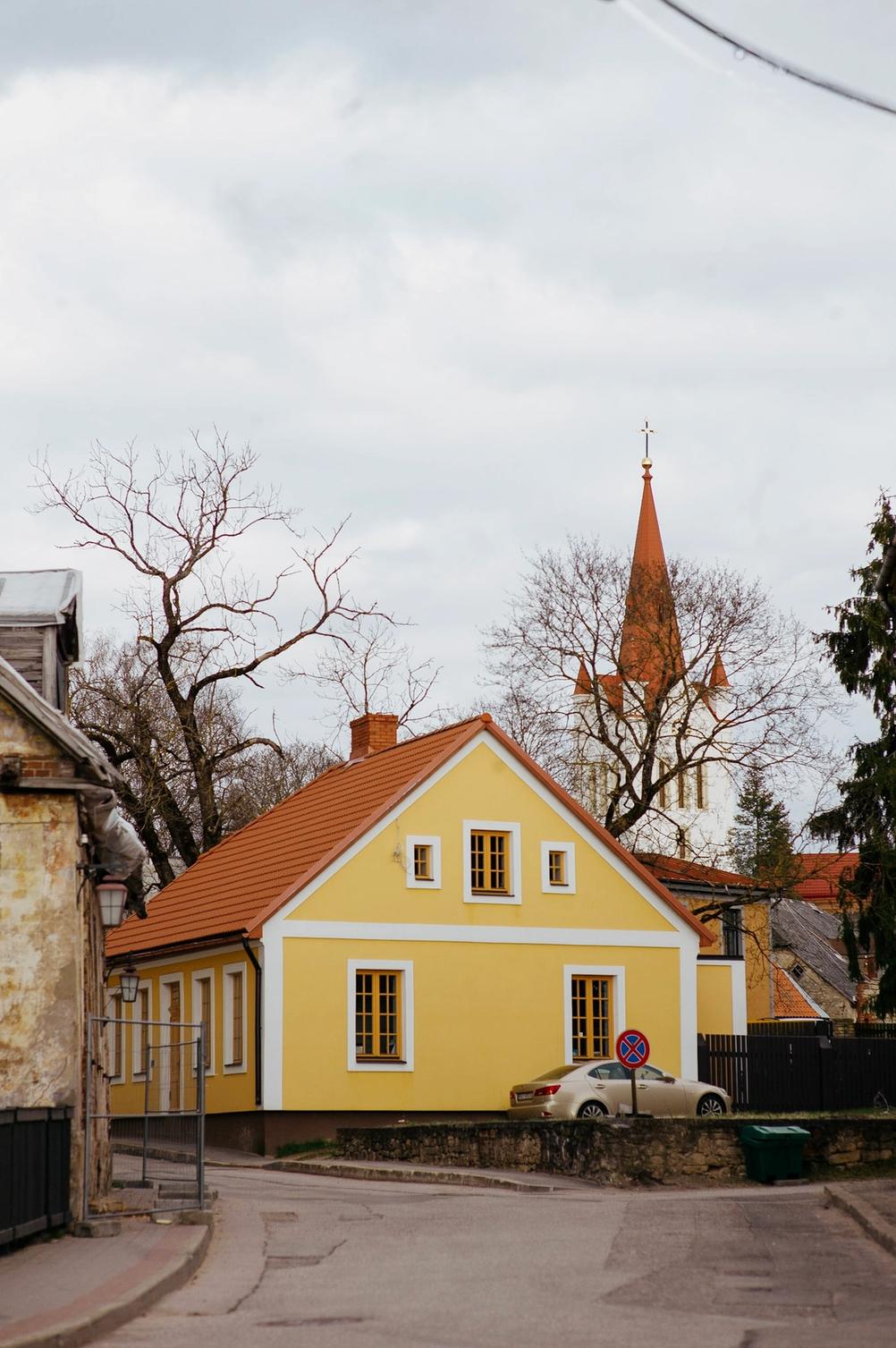
- Camera
- Leica M9
- Lens
- Leica Summicron-M Pre-ASPH 90mm f2
Whilst a boring photo it shows the purple fringing that this lens produces. You can see it around tree branches, especially for the tree on the left.
The weird "crack" on the top right is caused by a...crack in the sensor. So just ignore it.

- Camera
- Leica M9
- Lens
- Leica Summicron-M Pre-ASPH 90mm f2
I don't know what to say here. I struggle with colors when using this lens. Especially when there are a lot of strong colors.

- Camera
- Leica M3
- Lens
- Leica Summicron-M Pre-ASPH 90mm f2
- Film
- Kodak Portra 400 EI400
- Development
- Tetenal Colortec C-41
- Scanner
- Reflecta ProScan 10T
On certain film stocks the color rendition can look very nice.

- Camera
- Leica M3
- Lens
- Leica Summicron-M Pre-ASPH 90mm f2
- Film
- Adox IR-HR Pro 50 EI50
- Development
- Kodak HC-110; Dilution H; 9min
- Scanner
- Reflecta ProScan 10T
I also like to use this lens with a red filter. Contrast goes to high levels and you get a great separation of tones. You get a Zeiss-y pop.

- Camera
- Leica M3
- Lens
- Leica Summicron-M Pre-ASPH 90mm f2
- Film
- Kodak T-MAX 400 EI1600
- Development
- Kodak HC-110; Dilution B; 7:30min
- Scanner
- Reflecta ProScan 10T
But even without the red filter the rendering on black and white film is nice.

- Camera
- Leica M3
- Lens
- Leica Summicron-M Pre-ASPH 90mm f2
- Film
- Kodak Ektachrome EPP100 EI100
- Scanner
- Reflecta ProScan 10T
Having a built-in hood is super nice. It means that you don't have to worry about stray light beams hitting the lens in bad ways.
Subject Separation & Bokeh
You can expect to cause significant damage to the backgrounds with a 90mm f2 lens. You can morph the background into a gradient of colors if you want. You can also take a whole person photo from a medium distance and still wreck that pesky background. The last one is where this lens shines. Because the lens is sharp when wide open, you can create some "medium to large format like" looking photos. Just with less 3D pop. The subject can be sharp with the background melting into nothingness. It does require you to nail the focus which is often easier said than done.
Whilst you can get your subject to pop a bit, you can't get the Zeiss pop where the subject reaches out from the photo and punches you in the face. With Summicron your subject is more part of the photo instead of the real world so won't actually harm you.
Bokeh itself is a weird one. It ranges from smooth as a freshly oiled iron pan to harsh as a non-stick pan that has been abused by metal tools. And I don't understand how to control the bokeh to only get the smooth version. It seems like when the subject is either further away ( think full person in near distance ) or very close ( think a face ), the bokeh is smooth. When it's between these two, the bokeh shows some teeth. Long and light subjects in the background can look especially bad. I would expect a 90mm f2 lens to deliver smooth bokeh 95% of the time but that isn't the case here. Maybe the lens is too sharp for its own good and it has an impact on the bokeh.
Other than that, the bokeh is uniform and without any special character. It doesn't bring too much excitement but it also doesn't offend.

- Camera
- Leica M9
- Lens
- Leica Summicron-M Pre-ASPH 90mm f2
I like sharp and short telephoto lenses as they pull in the subjects together more than a wide lens would.

- Camera
- Leica M9
- Lens
- Leica Summicron-M Pre-ASPH 90mm f2
It's interesting how a single lens can deliver smooth and pleasing bokeh like in this photo whilst at the same time...

- Camera
- Sony A7S
- Lens
- Leica Summicron-M Pre-ASPH 90mm f2
...it can produce bokeh that grinds your eyes into a mush. And this is not the worst offender.

- Camera
- Leica M9
- Lens
- Leica Summicron-M Pre-ASPH 90mm f2
This lens can mimic larger format results but you have to get that focus correct. Here I have front-focussed a tiny bit and am barely holding on thank to the hyperfocal distance.

- Camera
- Leica M3
- Lens
- Leica Summicron-M Pre-ASPH 90mm f2
- Film
- Kodak Portra 400 EI400
- Development
- Tetenal Colortec C-41
- Scanner
- Reflecta ProScan 10T
Film improves all bokeh and the smooth bokeh that this lens can deliver looks particularly nice on film.
Final Thoughts
As you can tell, I have very mixed feelings about Leica Summicron-M 90mm f2 pre-ASPH. On the one hand the build quality is fantastic. It's sharp and can produce images that mimic larger formats. At least from time to time. On the other hand the lens is a bit "meh". Bokeh can be harsh. Purple fringing can be annoying. And the biggest offender is that the results don't bring enough joy to my heart.
Maybe I'm not the person that this lens is for. It could be for squares but I'm a circle. There are similarities. What is a circle if not a square with very rounded corners? But the differences might be too large. That's why I'm often wondering if I should sell this lens and get something else. Part of me doesn't want to. I like the results on black and white film and it can produce some great photos. So I keep talking to myself in circles. Or squares.
At the end of the day, I should sell it. It's not worth keeping such an expensive lens if you're not enjoying it. But it could speak to you. The characteristics of this lens might be just what you need. It's not a bad lens. For some it is fantastic. You might be part of that group. I'm not.
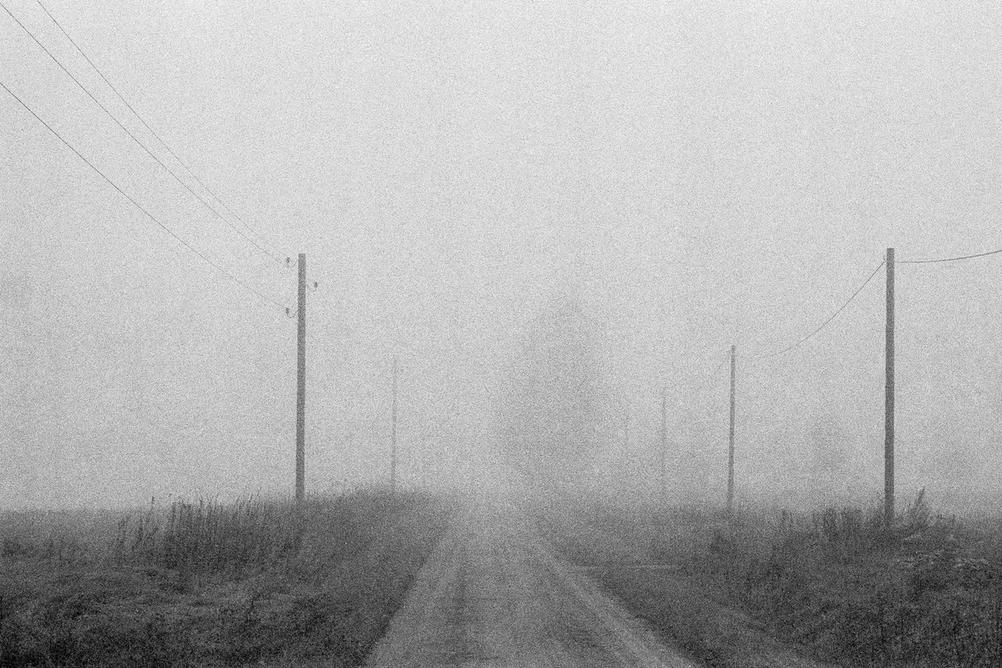
- Camera
- Leica M3
- Lens
- Leica Summicron-M Pre-ASPH 90mm f2
- Film
- Kodak T-MAX 400 EI1600
- Development
- Kodak HC-110; Dilution B; 7:30min
- Scanner
- Reflecta ProScan 10T
Sometimes sharpness doesn't carry through nor does it need to.

- Camera
- Leica M3
- Lens
- Leica Summicron-M Pre-ASPH 90mm f2
- Film
- Kodak Gold 200 EI200
- Development
- Tetenal Colortec C-41
- Scanner
- Reflecta ProScan 10T
In the coldness of winter the lubrication in the lens remains the same. All controls move with the same resistance.

- Camera
- Leica M9
- Lens
- Leica Summicron-M Pre-ASPH 90mm f2
All I want in the life is smooth ( or full of character ) bokeh. This lens can do it. But the way it handles tall and light subjects in the background is not to my liking.
